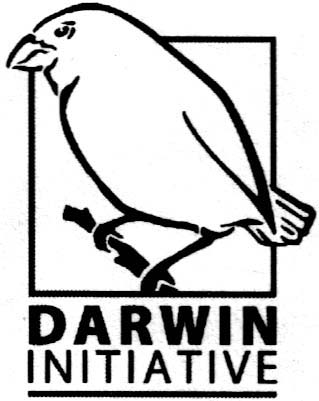CONSERVATION OF MICROFUNGI
a voice for unprotected and vulnerable organisms

CONSERVATION OF MICROFUNGI a voice for unprotected and vulnerable organisms |
 |
General view of work planned for this action
Through the Specialist Groups established by this Darwin Initiative project, and in conjunction and compatible with World Conservation Union (IUCN) Sampled Red List Index project, global Sampled Red Lists for Microfungi are being produced. These will be baseline conservation status assessments for microfungi, against which rates of biodiversity decline can be measured for the Rio Convention on Biological Diversity (CBD) 2010 Biodiversity Target and similar subsequent CBD objectives. Resulting lists are being made available on the internet, with hyperlinks to full information about each fungus (scientific name, authors, place of publication, information about associated organisms, substrata, specimens in reference collections, published records and field observations, with distribution maps and links to source data and other resources.
Selecting microfungi for the Sampled Red List
The population to be sampled. The microfungi evaluated in this work all come from one taxonomic group: the ascomycetes (including lichen-forming and non-lichen-forming species, and anamorphic fungi with presumed ascomycete teleomorphs). At present, the taxonomic classification is that of the 8th edition of Ainsworth & Bisby's Dictionary of the Fungi, but eventually the classification in the forthcoming 10th edition will be adopted. The population to be sampled is the ascomycete subset of IndexFungorum as it existed on 3 July 2007. The total number of ascomycete names received from IndexFungorum was 202912. This included significant quantities of synonyms. From that total number, the following categories were selected to comprise the population to be sampled: all accepted names of ascomycetes and their conidial states (i.e. one name for each species concept) [22272 names]; basionyms for all names where the current application of the name was, on the day of sampling, uncertain [106713 names]; all names where the current application of the name was, on the day of sampling, uncertain and the basionym was not known [7983]. The total size of the population to be sampled was thus 136968 names.
Making the sample. Random numbers for use in sampling came from Microsoft Basic's random number generator. Because many ascomycete names are of uncertain application, whatever the size of the sample, some selected names were expected, on closer study, to be synonyms of other names already selected. To allow for this, the initial random sample was for a larger number of names than the 1,500 required for compatibility with the IUCN Sampled Red List Index project. Because the digitizing of IndexFungorum was not a random process (for example, many lichen-forming fungi are strongly grouped within the database), every record in the population to be sampled was allocated a unique randomly generated number. The population was then sorted in numerical order by those numbers, and the process was repeated, so that the population had twice been sorted randomly. Every record in the population was then allocated a unique record number from 1 to 136968 (the total size of the population to be sampled). 3,000 random numbers were generated, ranging from 1 to 136968. The records with record numbers corresponding to those 3,000 random numbers were then selected. Those 3,000 records were then randomized by allocating a further unique random number to each, and they were sorted in numerical order by that unique random number. The first 1,500 names in that order were then taken, to form the ideal sample size recommended by the IUCN Sampled Red List Index project.
The unedited sample. The 1,500 names selected may be viewed in the unedited list.
Checking the sampled names. Those names are currently being scrutinized: a search is being carried out for missing basionyms and an attempt is being made to determine the identity of names of unknown application. Where such a name is found to be a synonym of some other accepted name, that accepted name is replacing the name of unknown application in the list. If this results in duplication within the 1,500 names, a replacement is taken from the remaining 1,500 names (the first duplicate name found being replaced by name number 1,501, the second by name 1,502 etc.). Names not effectively published, and names known only from catalogue entries, with no known place of publication are being similarly replaced. The following categories are receiving particularly close scrutiny: species known only as fossils, and species with nomenclaturally invalidly published / illegitimate names which may, however, represent genuinely different species. When the sample of names of 1,500 different species has been settled, names not already in the Cybertruffle Nomenclature & Taxonomy Database will be added, and a subsidiary sample will be taken of the first 900 names. They will be the species evaluated during the present project.
Current state of work. The 1500 names, with a supplement showing replaced or rejected names may be viewed in the list of names currently being checked.
Previous page
Home